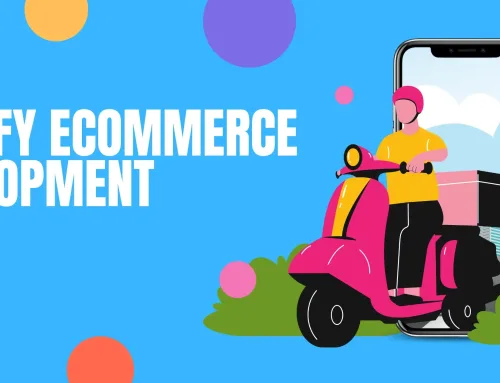Technology is reshaping the business tactics of every industry by creating efficiencies, saving money, and offering exceptional products and services. Retail enterprises are also accommodating the latest technological advancements for their benefit.
The latest technology is an approach by which retailers perform to beat the competition by importing new variations and solutions to spark customer experience across multiple areas.
The latest technologies are boosting the retail sector with exciting possibilities. It is transforming merchandise designs for creating a memorable experience for both online and in-store customers.
Retail software companies enable your business renewal by leading an in-store renovation or comprehensive digital transformation.
The advanced age for retail business
The increasing sales in retail and tremendous income are making business owners seek to take their companies to the next stage by importing modern technologies. Digital technologies can obstruct retail businesses and lead them to enter a new era of renovation of the supply chain and building new business models.
The remarkable technology that has transformed the retail sector tremendously is 4G and the future 5G. They are permitting internet connectivity for the customers 24/7, hence converting more and more possibilities for the retail business owners.
The transformation of online payments and the establishment of cloud computing are making the retail sector expand further. As bulk customers are accessing software and data technology, it is an added advantage for business owners.
It gathers the relevant data of customers to analyze and provide an enhanced experience with a personalized touch. The unique technological boost in retail software is the 3D printing and wholesale printing that is becoming an immense variation handler in the future.
Impact of the latest technology in the retail sector
1. Decreasing the inventory costing
The inventory tool is becoming an elementary tool for every retail company’s management. It provides information about your merchandise and the product you received and sold to the customers.
The automated systems update the database whenever the merchandise sell or transfers from one location to different. It also provides an instant data analysis tool for tracking your business status.
In the online setup, each feature of your store’s administration is ready at your fingertips. Customers can choose and view the products by cost, price, margin, date received, or UPCs. You can organize the latest categories with different subcategories of various styles, sizes, or colors in minimal time.
2. Enhances customer satisfaction
An electronic and automated inventory system empowers you to reply to all queries from customers related to merchandise stock. This system helps you to check the inventory status of various stores at different locations.
It helps in resolving queries and delivering a better customer experience.
3. Recommendation engines
The recommendation engine helps the customers merchandise and filters the options for the customer relevant to the product shopping. The data algorithms help in analyzing the customer’s shopping behavior and offer better recommendations.
The recommendation engine helps in higher sales for retailers and enhanced customer satisfaction.
4. Virtual trial rooms
Virtual trial rooms are an impressive innovation in the retail business that uses amplified reality. Amplified reality is in a special place to help the customers choose the products.
It helps the customers to use virtual trial rooms to try out merchandise like jewelry, cosmetics, and other products through their smartphones before purchasing.
The virtual trial rooms are available on customer’s smartphones, and as a result, ARKit is a critical feature for developing amplified reality applications.
5. Data science-based individual interaction
Data science and machine learning make it even more robust. Customers’ expectations are the fundamental drivers of this technology. You can use purchase data for building shopping profiles specifically for particular customers. Therefore, machine learning versatility helps users to supervise their shopping experience.
Therefore, e-commercial stores are displaying tremendous success and growth with personalized shopping experiences.
Bluetooth low energy and RFID technologies utilize a nominal amount of power that helps in leading data collection from customers for improvising retail personalization experience.
However, with data collection, it is necessary to maintain customer privacy in the retail business. Treating customer privacy security plays a crucial role in retail companies because it ensures the trust and reliability of the customer in the company.
6. Enhancing the predictive analysis
Automated analytical predictive systems develop pretty accurate and estimated demand forecasting.
- The past sales, predictions, and future orders are available in a centralized system. Hence, it provides more correct predictions depending on the totality of the data.
- Predictive systems are available for each manager, which brings a wide range of inputs into the process via interactive Web-based applications. By considering every factor, forecasting gets adjusted further accordingly.
- Automation leverages instant and quick projections and scenario planning.
7. Accepting the just-in-time relationship with the suppliers
Prediction tools perform in the lineup with the central database, inventory control, and sales systems to link procurement with actual customer requisites.
The outcome is a possibility to minimize the inventory and adapt just-in-time relations with the suppliers.
8. Internet of Things (IoT)
The Internet of Things is transforming the shopping experience. It is possible due to the data availability and the ability for processing it. Nowadays, customers require experience with personalization and data for taking decisions. The Internet of Things is helping stores provide this experience to all customers. Intelligent equipment like sensor-embedded shelves is tracking inventory to change retail performance.
9. Facial recognition
Most retailers have successful online and offline availability. Facial recognition helps retail owners to counter shoplifting and retail crime. Additionally, it introduces the personalized online shopping experience in offline stores.
With customer identification via facial recognition, the staff responds better to the customer’s requirements. However, there are specific legal and privacy-related concerns, but there are immense benefits of facial recognition technology for retail businesses.
10. Automated delivery robots and store assistants
In the future, it is possible to communicate with robotic store assistants. The robotic assistants will have built-in 3D scanners for identifying products and navigating your customers within the store. For any further explanation, the robots can initiate video conferencing with human staff.
Robots are also helpful in the supply chain for checking stock, identifying errors in pricing, and locating missing items. The collected data improves the customer experience via optimized store layouts and processes.
11. Cashless shopping
The technology that helps customers with the scanned products and the amount that gets deducted automatically from their account will soon become substantive.
The latter approach will lead to the creation of a complete touch-free shopping system. Customers will scan barcodes and QR codes and pay for the products. They will also receive details about their products on smartphones.
It will help to reduce direct product administration by offering sustainability and answerability issues for more transparent production processes.
12. Customer support chatbots
Nowadays, many retailers are accepting customer support chatbots. Messaging-based customer support is now becoming a preferred communication mode to reduce voice calls. Artificial intelligence is transforming the overall customer experience from pre to post-sales. It is helping customers by resolving concerns without human intervention.
13. Voice Commerce
In 2021, artificial intelligence and natural language processing will continue to advance. With Google Assistant, Alexa, and Siri as the market’s leading consumer voice assistants, each has made numerous improvements to serve customers better.
Their utility has surpassed what was previously possible because they do not require a screen; all they need is the ability to recognize your voice. Consumer-owned IoT devices, such as smart mirrors and smart displays, can deliver product content discreetly and beneficially.
Screens may even be extra. With voice commerce, smart speakers only need to hear and respond to the consumer’s voice. Customers can use voice commands to locate products and even make purchases.
14. Supply Chain Automation
Maintaining a continuous flow of goods through global supply chains and onto store shelves (or a customer’s doorstep) is difficult.
A few hours’ delay or disruption can send ripples throughout the delivery network, frequently affecting seemingly unrelated services.
Increased automation, RFID-enabled tracking, and shipping schedules optimized by sophisticated algorithms enable retailers to deliver products faster and more efficiently than ever before. It reduces the time customers wait to receive purchases or locate items on the local store shelf.
15. Geolocation Strategies
As technology tools become more pervasive, the possibilities for leveraging them in novel and exciting ways expand. One exciting development has been incorporating geolocation strategies that enable a more detailed view of customers, their environment, and their needs.
Customer experiences can be tailored to the unique characteristics of a particular market, connecting users to nearby stores and businesses. Additionally, they can communicate with other location-based services. Knowing when someone is near a particular location creates novel marketing opportunities.
For example, someone who uses a ride-sharing service may receive notifications about nearby retailers or restaurants about which they were previously unaware.
16. Track Margins
Your inventory control system can recommend pricing and markdowns within the parameters you specify and track your margins based on the amount you enter. Additionally, it will keep you informed of gross margins.
You never lose sight of your margins, even when special pricing offers are made. For example, you can differentiate pricing for stores in different geographic regions and preferred customers such as employees or large buyers.
Additionally, you can schedule markdowns for end-of-season or other sales. The system continues to monitor gross margin, taking into account the impact of discounts and preferred pricing.
Conclusion
Retail businesses are accepting digital transformation to sustain themselves in the competitive market. They are adhering to the customer needs from both online and offline stores. The modern era is offering enormous opportunities for providing memorable customer experiences and profitable business. Technological advancement is benefiting both retail owners and customers and making their lives convenient.










